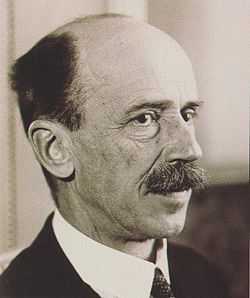Preludes – Anti Bolsevista Comité – Bécs (Wien)
Fact of the Hungarian figure „Arrival of Horthy”
Part of the „Creation of the modern states (1918-1920)” topic
Vienna, the capital of Austria, played a pivotal role in the prelude to Miklós Horthy’s rise to power in Hungary, particularly through the activities of the Anti-Bolshevist Comité. Established in 1919, this committee was formed by Hungarian exiles and conservative forces in response to the rise of the Hungarian Soviet Republic under Béla Kun. The committee was crucial in coordinating efforts to overthrow the communist regime in Hungary and restore a conservative, nationalist government.
Key figures involved in the Anti-Bolshevist Comité included Count István Bethlen, a prominent Hungarian politician who later became Prime Minister of Hungary. Bethlen was instrumental in organizing the committee’s activities and securing support from the Entente powers. Another significant figure was Miklós Bánffy, a Hungarian aristocrat and diplomat who played a vital role in the committee’s diplomatic efforts to gain international backing for the counter-revolutionary cause. Alongside them was Gyula Gömbös, a military officer and fervent nationalist, who was deeply involved in organizing the military aspects of the anti-Bolshevik efforts.
Vienna served as a strategic base for these figures and others, including General Pál Teleki, who would later become Prime Minister of Hungary. The city provided a relatively safe haven for planning and coordination, given its proximity to Hungary and its role as a hub for Central European political activity. The Anti-Bolshevist Comité worked tirelessly to undermine the Hungarian Soviet Republic, using Vienna as a center for propaganda, diplomatic negotiations, and the organization of military forces aimed at reclaiming Hungary from Bolshevik control.
The committee’s activities in Vienna reflected the broader geopolitical dynamics of post-World War I Central Europe, where the collapse of empires and the threat of Bolshevism created a volatile environment. Austria, dealing with the aftermath of the Austro-Hungarian Empire’s dissolution, was eager to prevent the spread of communism and supported efforts to stabilize the region by backing conservative and nationalist movements.
The work of the Anti-Bolshevist Comité laid the groundwork for Miklós Horthy’s eventual march on Budapest and his rise to power. The collaboration and efforts of figures like Bethlen, Bánffy, and Gömbös in Vienna were crucial in building the international and domestic support necessary for the success of the counter-revolutionary forces. This ultimately led to Horthy’s appointment as Regent of Hungary in 1920, marking a significant shift in the region’s power dynamics during a tumultuous period in Central European history.Horthy’s eventual arrival in Budapest in November 1919, leading to his appointment as Regent of Hungary in 1920, marked the culmination of these efforts. His regime would shape Hungary’s interwar period, reflecting both the impact of the counter-revolutionary government formed in Szeged and the broader Central European dynamics of the time. The events in Szeged are thus crucial to understanding the prelude to Horthy’s rule and the political landscape of Central Europe in the early 20th century.





